Herbs have a rich and interesting history that dates back to ancient times.
In the past, many herbs were used medicinally to treat various ailments and their symptoms.
Plants were often categorized by their medicinal compounds and used as part of traditional medicine before the invention of pharmaceutical drugs.
Herbal remedies have been discovered and catalogued for centuries, with information passed down through generations on how to cultivate, prepare, and use them.
Even today, many people use herbal medicines to ease ailments and treat health problems.
The phytonutrient content of herbs makes them naturally health-promoting, and as you'll see from the list below the scientific evidence for their efficacy in helping prevent and treat infection and disease is remarkable.
Many herbs also have a rich tradition relating to food and the cuisines of various cultures around the world. Herbs are grown and dried to season food and provide unique flavoring.
Casual gardeners enjoy growing their own herbs at home because the plants are small and easy to cultivate. And using fresh herbs in cooking adds freshness, flavor and makes dishes more delicious.
In this post we'll look at some herbs you can grow really easily indoors, with no knowledge of plants or gardening required.
7 Reasons Indoor Herbs are Awesome
There are a number of good reasons to grow indoor herbs, so if you still need a little convincing, here's 7 for you:
- Requires minimal maintenance
- Doesn't take up a lot of space
- Can be readily accessed for cooking or making tea
- There are fewer or no pests indoors to destroy your plants
- The herbs can be grown year-round
- Save money on buying herbs at the grocery store
- Provides green-ambience and brings nature indoors
12 Best Herbs to Grow Indoors
1. Basil
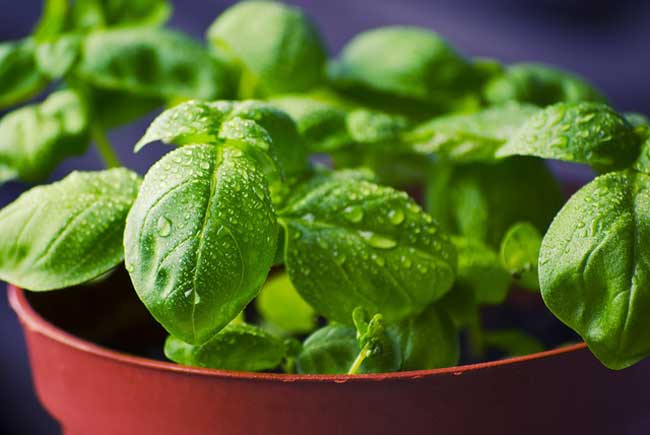
This flavorful and fragrant leafy green herb is commonly used to season foods. There are many varieties, including Sweet Basil, and Thai Basil.
Basil is rich in vitamin K, iron, and manganese. Basil also contains antioxidants and has anti-inflammatory properties (1, 2).
Studies show that basil may help to prevent colon cancer and that extracts from basil have some anticancer activities due to their antioxidants and other compounds (3, 4).
Basil can also help to lower blood pressure in people experience hypertension (5).
Basil complements many other herbs and is best eaten fresh because cooking it can reduce the flavor and cause it to become discolored. It is commonly used in dishes with tomatoes, added to salads, and is the primary ingredient in pesto.
2. Peppermint
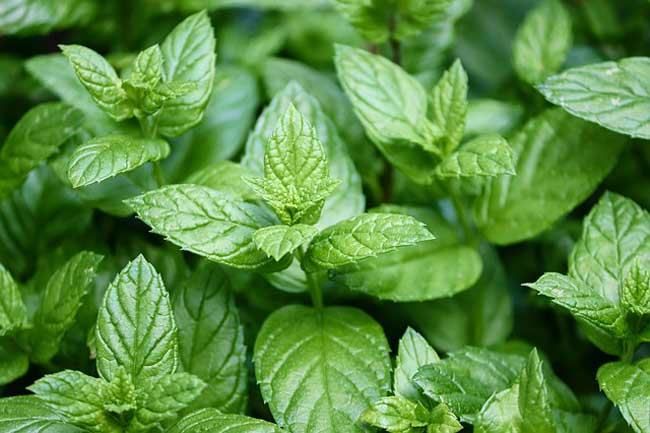
Peppermint is easy to grow at home because it grows fast and doesn’t need a lot of care.
It is most often used to make tea, and leaves are crushed to extract the oils to make flavorings and scents.
Many people find peppermint to be soothing to the stomach and may consume it to promote better digestion following a meal.
Research shows that peppermint oil can help to relieve symptoms of irritable bowel syndrome, a gastrointestinal disorder accompanied with abdominal pain (6).
Peppermint has also been used effectively to reduce chemotherapy-induced nausea and vomiting in cancer patients (7).
Peppermint oil can also kill certain types of bacteria that can be harmful to humans.
One study found that it killed E. coli, Listeria, and Salmonella in fruit juices (8).
Researchers also found that it may be useful to help improve memory and concentration, as those who consumed it performed better when performing cognitive tasks (9).
An easy way to add more peppermint to your diet is by making your own tea by steeping fresh leaves. The leaves can also be chewed to freshen the breath or aid in digestion. Mint can also be chopped and added to salads or used as a garnish.
=> Read Tips to Grow Your Own Mint
3. Sage
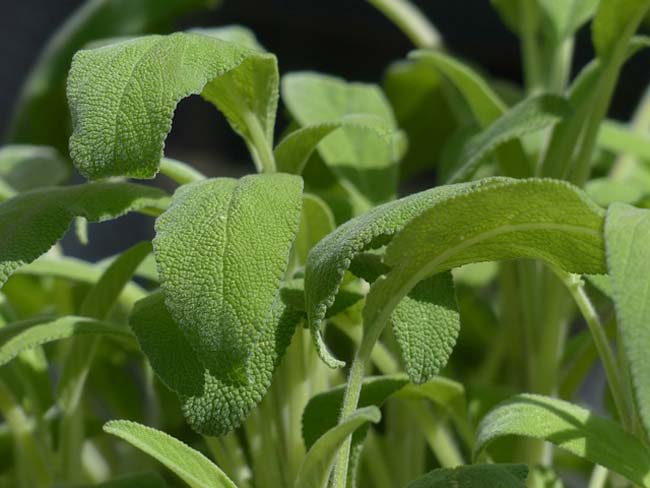
You can take a few pieces of sage from an existing plant and transfer it to water where it will begin to grow roots.
Make sure to give it enough air so it doesn’t become too wet and develop mildew. The strong aroma and distinctive flavor of this herb means a little goes a long way when cooking.
Sage is a good source of vitamin K and, in addition to cooking, is often used in cleaning supplies.
It is full of antioxidants and contains over 160 unique polyphenols (10).
Some of the compounds found in sage have been found to contain anticancer, anti-inflammatory, antioxidant, and antimicrobial effects (11).
One study found that consuming just one cup of sage tea two times a day helped to reduce bad cholesterol, raise good cholesterol, and boost antioxidant defences (12).
Sage can also contribute to lowering blood sugar and improving insulin sensitivity in humans. It was found to act similarly to common diabetes medication (13).
4. Oregano
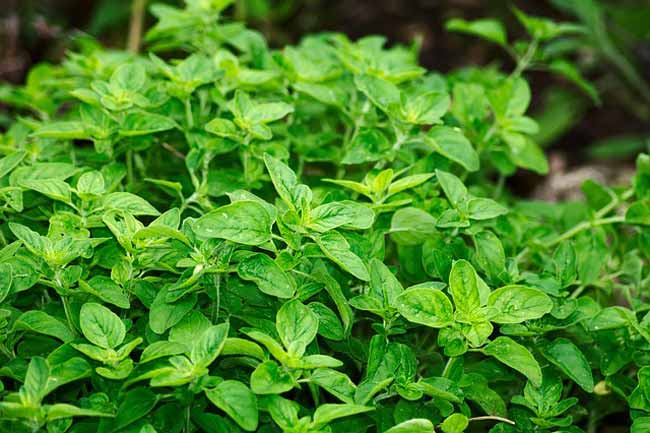
To help oregano grow effectively, cut off the top of the older leaves to promote new growth.
Like many other herbs, oregano is a good source of antioxidants. Oregano oil has been found to contain many antioxidant compounds that can protect cells from damage by free radicals (14).
It also is highly antibacterial and can inhibit the growth of E. coli bacteria; while another study identified 23 different types of bacteria that oregano was resistant against (15, 16).
Oregano is thought to be particularly effective at killing colon cancer cells. A test-tube study found that the cancer cells stopped growing when treated with oregano extract (17).
One of the components found in oregano called carvacrol has also been linked to suppression of colon cancer cell growth (18).
While oregano is known as a seasoning for pizza, it can also be used in pasta or to make sauces and dressings.
=> Learn the Benefits of Taking Oregano Oil
5. Stevia
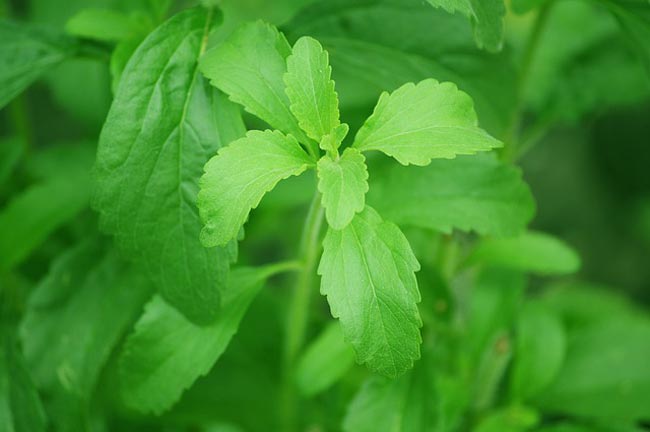
This plant is used as a natural sweetener and is a low-calorie alternative to sugar. It grows quite prolifically without needing a lot of care and leaves can easily be harvested, dried, and crushed to make your own stevia powder.
Stevia can help to lower blood pressure and fasting blood glucose to help reduce cardiovascular risk factors (19).
It is also effective at helping to promote insulin production by stimulating pancreatic cells, and therefore may be helpful for treating type 2 diabetes (20).
Because stevia has fewer calories than sugar, it may promote weight loss.
One study found that adults who consumed a low-calorie snack containing stevia compared to a high-calorie sugar snack had the same satiety levels and did not compensate for the lack of calories by eating more at later meals (21).
6. Thyme
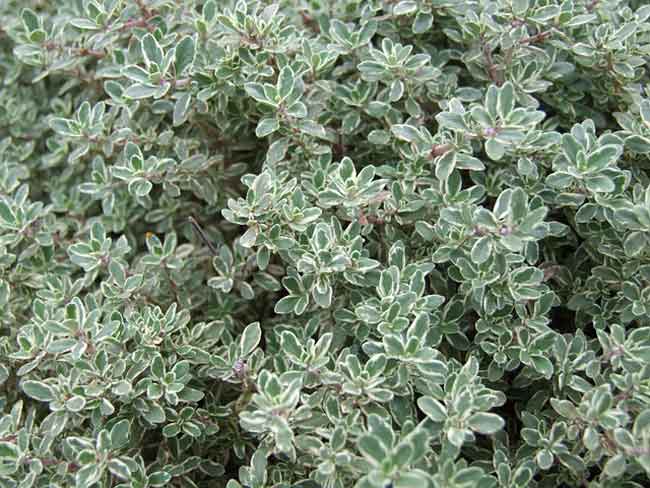
Thyme is flavorful herb that is easy to grow because it thrives on sunlight and is drought-resistant.
Sprigs of thyme can be dried and will retain their flavor well. This herb is widely used in French and Italian cuisine and can be added to soups, breads, and sauces.
Rich in vitamins C and A, thyme can help relieve the symptoms of bronchitis and other respiratory conditions. One study found that thyme and ivy helped treat coughs in bronchitis patients (22).
Thyme also contains thymol, which has antibacterial and antifungal properties. It has been found to kill cancer cells and kill bacteria and fungus (23, 24). It also has an anti-inflammatory effect on the colon and can have a positive effect on colitis symptoms (25).
7. Rosemary
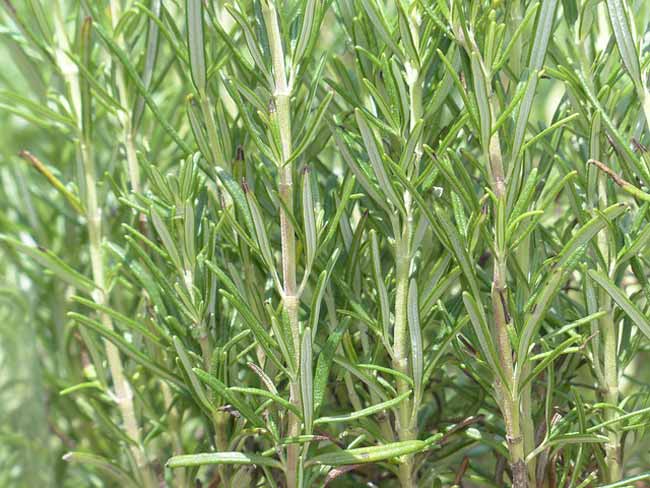
This thick-stemmed plant may take some time to establish its roots. Make sure you put it in a sunny place where it will thrive, such as a windowsill. The herb itself has needle-like leaves and is one of the most popular plants to grow at home.
In traditional medicine, rosemary is used to help relieve pain. One study tested this by using aromatherapy acupressure on patients with shoulder pain. Those who received the rosemary aromatherapy instead of acupressure alone reported a slight decrease in pain (26).
Studies have also found that rosemary may help increase circulation by expanding blood vessels (27).
Research shows it may be effective at decreasing inflammation. A study using rosemary oil to massage patients with rheumatoid arthritis showed a decrease in pain and inflammation (28).
9. Tarragon

Tarragon is part of the sunflower family and has a light flavor. French tarragon is the most common for cooking and grows best in warm temperatures, making it well-suited to indoor growing.
It is best to use it soon after being picked because the flavor can weaken over time.
Like rosemary, tarragon has been used for many years as a pain treatment. One study found that tarragon plants and its essential oils effectively help treat pain (29).
Tarragon may help to improve insulin sensitivity and blood sugar levels in those with diabetes or who are glucose intolerant.
A study found that tarragon extract lowered the blood glucose of diabetic mice (30). Another study found that tarragon helped keep blood sugar levels more balanced and decreased insulin secretion (31).
9. Lemon Balm
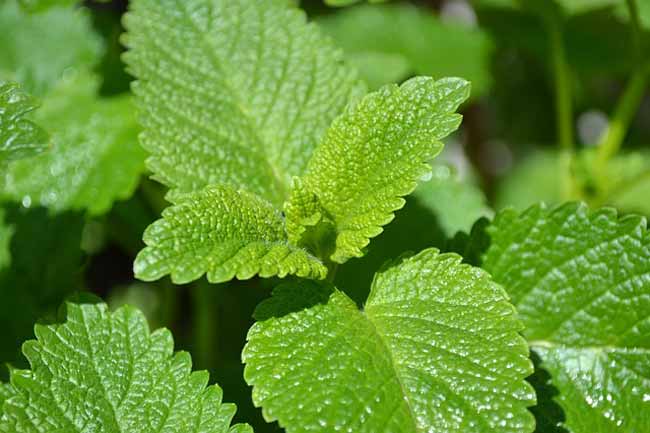
This delicious smelling herb has a rich flavor and the leaves produce a lemony aroma. It is often used to make tea, or as an ingredient in marinades and jams, while extracts are used for their flavoring potential.
Lemon balm has been used to help treat anxiety and depression by promoting calmness and modulating mood.
An animal study found that it had an antidepressant effect, while a test on humans found that a dose of lemon balm resulted in a decrease in anxiety and sleep disturbance (32, 33).
This herb also has anti-cancer effects and was found to kill brain cancer cells and increase their sensitivity to chemotherapy (34).
Lemon balm was also shown to shrink breast cancer tumors in rats, and may help treat colon cancer by inhibiting proliferation of cancer cells (35, 36).
=> Read more about cancer-fighting vegetables
10. Chives
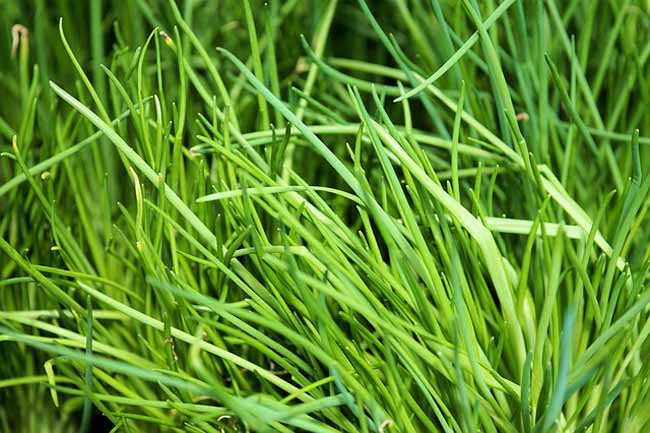
Chives are similar to garlic, scallions, and shallots. They have hollow stalk-like leaves that grow tall like grass and are really easy to sprout, making them one of the best herbs to grow indoors.
With a mild flavor, similar to onions, they are most often used as a garnish or mixed into salads and casseroles.
Allium vegetables like chives have been shown to have cancer-fighting abilities and may be effective against stomach, colorectal, esophageal, and prostate cancer (37).
Chives are also rich in vitamin K, which is important for bones (38).
=> Talking of Bones: 25 Sources of Plant-Based Calcium
11. Parsley
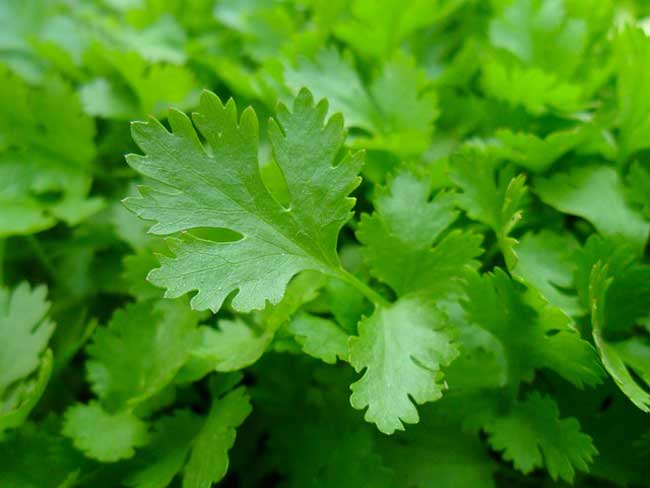
There are two common kinds of parsley, the French type with curly leaves and Italian which has flat leaves. It is used a lot in Italian cooking, is the main ingredient in tabbouleh, and can be mixed into sauces, dressings, and rubs.
Parsley contains some compounds that help fight cancer such as flavonoid antioxidants, which may reduce the risk of colon cancer (39).
Parsely also contains the carotenoids lutein and zeaxanthin, which can help reduce the risk of age-related macular degeneration (40).
12. Dill
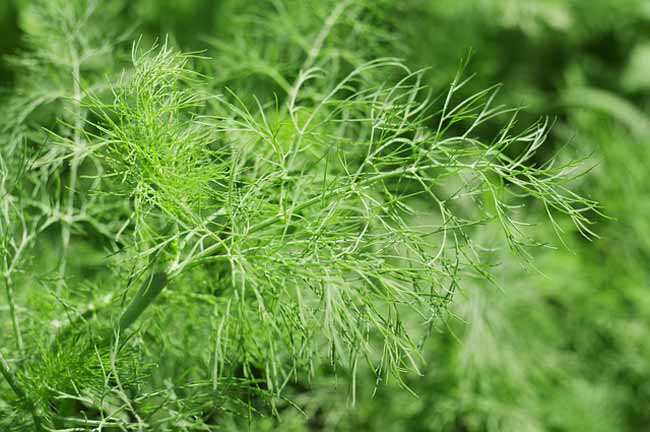
Dill leaves and seeds are used in food preparation to flavor pickles, make dips and dressings, or simply combine with fresh vegetables. Fresh dill is a good source of potassium, calcium, and vitamin A.
Traditionally, dill has been used to treat painful menstruation, and the chemical apiole may be the reason. One study found that women who took dill seed powder experienced pain relief comparable to those who took a similar drug to relieve pain (41).
Similar to menstrual pain, dill is effective at reducing the length of labor pains.
Mothers in a study who had dill seed tea had a shorter duration of pain than those who did not (42).
Dill is also thought to help breast milk production, but more research is required in this area.
—–
Now you've got all the information on the potential health benefits of these herbs to grow indoors, you can start planting today. The easiest way to get started is to take a cutting from someone else, or to buy a ready sprouted plant for a couple of dollars at a store of garden centre.
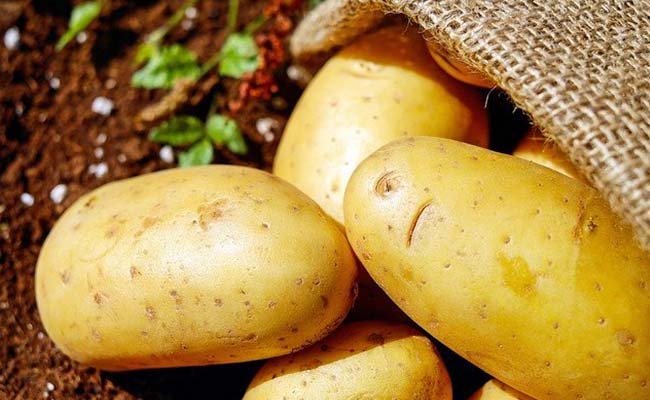
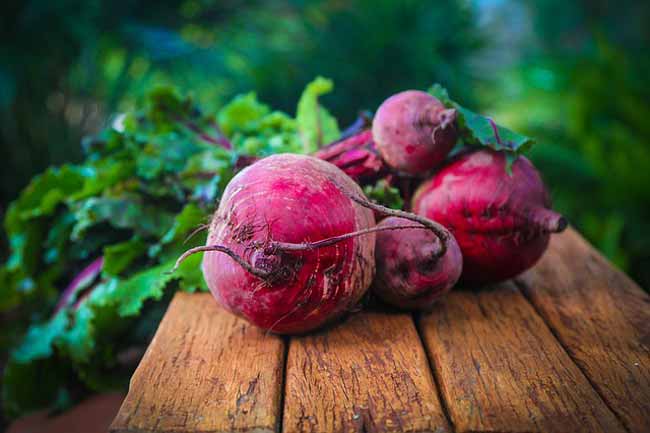


Hi, am an omnivore but like your tips on how to maximize the veggie portion of my diet
Oct 14, 2019 at 7:53 pm
Hi, again tell me what you think of this herbal brew ,combine caraway seeds,rosemary,cummin,and chamomile,in a sack made from a coffee filter, twist the end tight.have ready a piece of microwave safe plastic with a 3/8 or 10 mm hole in it pull the twist end of sack through , place in 1 qt. mason jar fill with clean water,microwave on low for 10 min. Remove sack when cool screw on cap, place in fridg, enjoy year round works well hoy or cold
Oct 14, 2019 at 8:15 pm
Sounds interesting. I’ll have to give it a try. It’s getting cold here now so hot would be perfect!
Oct 14, 2019 at 9:10 pm